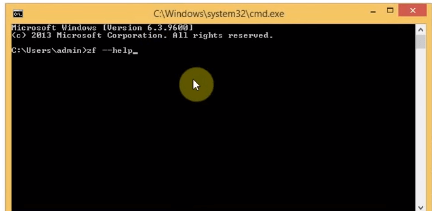Zend Framework Tutorial for Beginners
Introduction to Zend Framework
Zend is an open-source object-oriented PHP Web Framework. Zend Framework was developed by AndiGutmans and ZeevSuraski. It is a collection of various PHP classes that helps to create web applications. It is an open-source MVC framework that is built around the MVC design pattern used for rapidly developing, web applications. Zend Framework has many loosely coupled components, so it is also known as "Component Library." This framework provides a PHP stack and Zend server to run various Zend applications.Zend Studio
Zend Studio is an IDE that includes multiple features to integrate with Zend Framework. It provides code generation and an MVC view. The current Zend framework 3.0 includes various new components such as XML to JSON converter, JSON RPC server, PSR-7 functionality, and compatibility with PHP 7.Zend Framework2
Zend Framework2 is an open-source framework for creating web applications services by using PHP 5.3+. Zend Framework2 uses object-oriented code and utilizes most of the new features of PHP 5.3, namely Lambda Functions, Namespaces, and Closures. Zend Framework2 had evolved from Zend Framework1, which was a successful PHP framework with more than 15 million downloads. Zend Server has two different versions which are the following:- Free community version- It can be downloaded for Free. It has fewer features and mainly used by beginners or students to learn Zend Framework.
- Commercial version- It’s a paid version. This version has more advanced features. Mostly used by professionals to create attractive web applications.
Features of Zend Framework
Some of the striking features of Zend Framework are given below ?- Object-Oriented- It 100% object-oriented web application framework.
- MVC Implementation- It supports advanced MVC implementation.
- Multi-databases- It provides multi-databases including PostgreSQL, SQLite, etc.
- API- It has a simple cloud API.
- Session Management- Zend Framework offers session management.
- Data Encryption- It maintains data encryption.
- URI- It has flexible URI Routing.
- Zend provides RESTful API development support.
- Reusability- It supports code reusability and is easier to maintain.
- Loosely Coupled- Zend’s loosely coupled architecture allows developers to use the components they want.
Why Zend Framework?
Zend Framework is the most popular framework and is mostly used by PHP developers. It provides a flexible and stable code with full intellectual property rights. It also makes programming more accessible. It is fast and easy to learn thus, makes it a convenient framework. Zend also supports robust cryptography tools and various password hashing techniques.Advantages of Zend Framework
The advantages of the Zend Framework are given below:- Loosely Coupled? Zend is a loosely coupled framework which offers the option to delete the modules which they don’t need in the web application. This loosely coupled architecture also allows the PHP developers to use the components they want.
- Performance? Zend Framework provides highly optimized performance. Zend Framework3 is four times faster than its previous version.
- Security– This Framework supports industry standard encryption for security purposes.
- Testing– Zend Framework has an integrated PHP Unit such that the testing can be done quickly.
- Rapid Release Cycle- TheZend Framework team follows an aggressive release schedule, with an average of between one and three releases each month.
- Code-Generation Tools- Zend Framework includes a “tooling” feature that allows developers to get a new Zend Framework project up and running with minimal effort.
Zend Goals
Following are the goals of the Zend Framework:- Flexibility- Zend Framework is flexible to work.
- Simple and productive- Zend Framework is very simple and produces productive code
- Compatibility- It is a compatible framework which works for every PHP- capable environment.
- Extensibility – The user can easily cover all the framework classes.
- Portability – Zend is built to support multiple PHP- capable environments.
Application Environment
All Zend Framework applications are also known as PHP applications that can run in any PHP-capable environment. This environment consists of at least the following three components:- A base operating system that is usually either Microsoft Windows or Linux
- A Web server(Apache on Linux or Internet Information Services on Microsoft Windows) to intercept HTTP requests and serve them directly or pass them on to the PHP interpreter for further execution.
- A PHP interpreter to parse and execute the specified PHP code, and return the output to the Web server.
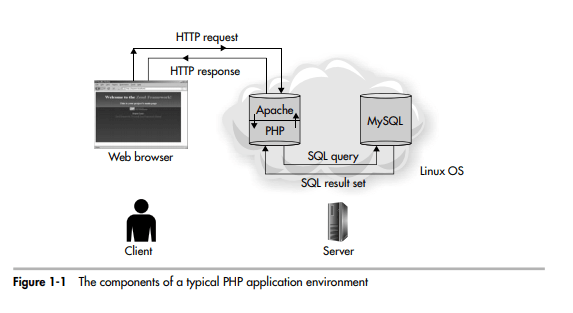
Above image is only for reference.
- There’s a very useful component called a database engine. It includes database such as MySQL or PostgreSQL, that holds application data, accepts connections from the PHP layer and modifies or retrieves data from the database. Figure 1-1 depicts the interface between these components.
Install Zend Framework
As a necessary first step, first, you must ensure that you have a working Apache/PHP/MySQL development environment. Zend Framework can be installed by two ways which are as follows:- Manual installation
- Composer based installation
Manual Installation
Step 1: To begin, go to the Zend Framework website and download the latest version clicking the below-given link – https://framework.zend.com/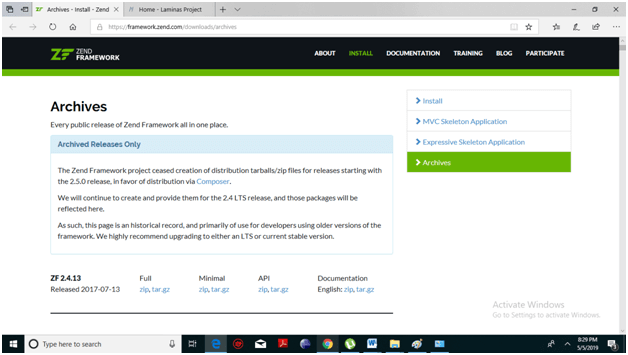 Step 2: After your download has been completed, extract the content of the downloaded archive file and place it to the folder where you would like to keep it. The two necessary files are bin and library as shown in the below screenshot.
Step 2: After your download has been completed, extract the content of the downloaded archive file and place it to the folder where you would like to keep it. The two necessary files are bin and library as shown in the below screenshot.
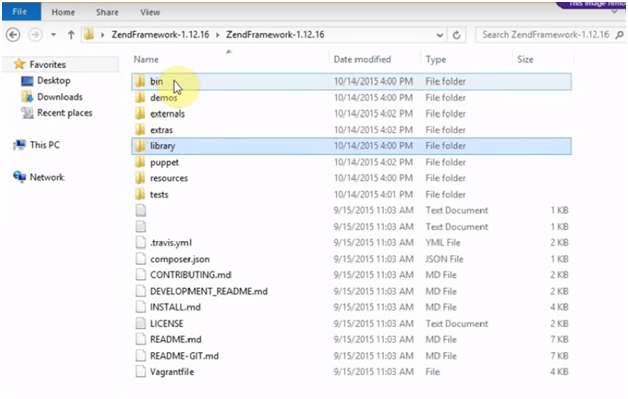 Step 3: Please make sure that you have installed XAMPP or WAMP.
Step 4: Put the bin Folder inside your PHP folder and rename it to zend-bin. Please make sure that the Zend bin ha following two files.
Step 3: Please make sure that you have installed XAMPP or WAMP.
Step 4: Put the bin Folder inside your PHP folder and rename it to zend-bin. Please make sure that the Zend bin ha following two files.
- php
- bat
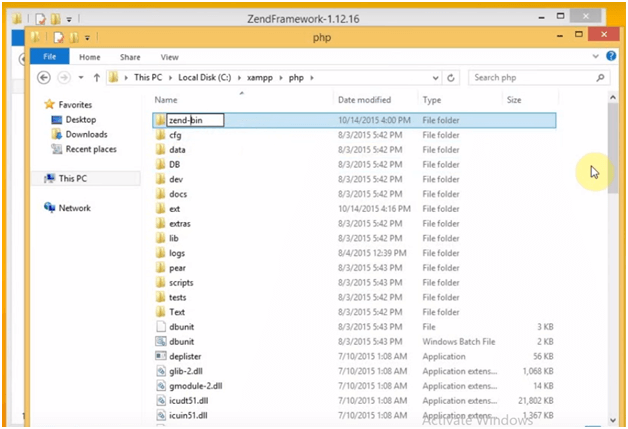 Step 5: Include the path in the php.ini file
Step 6: Finally, we have to add the path in System variable so that we can configure the ZendCLI tool inside the zend-bin folder to work globally across the system.
Step 7: Right Click on This PC. Click on the properties option and then click on Advanced System settings. Click on environment variable under the Advanced tab.
Step 8: Click on the Path variable placed under the System variables list. Click on Edit and add your zend-bin directory location at the end.
Step 5: Include the path in the php.ini file
Step 6: Finally, we have to add the path in System variable so that we can configure the ZendCLI tool inside the zend-bin folder to work globally across the system.
Step 7: Right Click on This PC. Click on the properties option and then click on Advanced System settings. Click on environment variable under the Advanced tab.
Step 8: Click on the Path variable placed under the System variables list. Click on Edit and add your zend-bin directory location at the end.
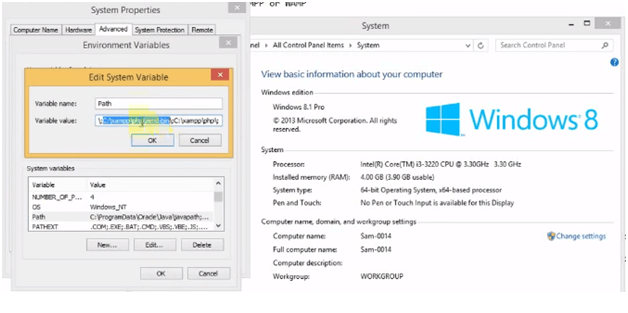 Step 9: Try to restart your machine to make sure the System variables are implemented.
Step 10: To ensure that our configuration is working, open your command prompt and run “zf --help” command.
Step 9: Try to restart your machine to make sure the System variables are implemented.
Step 10: To ensure that our configuration is working, open your command prompt and run “zf --help” command.
Composer Based Installation
Programmers use the Composer tool for the easy installation of Zend framework. This is the advanced method to install the latest version. To install all the modules of the Zend Framework collectively, use the given below command ? $ composer require zendframework/zendframework The Zend Framework’s module can be installed separately. For example, for installing the MVC component, use the given below composer command: $ composer require zendframework/zend-mvcAdd Zend Framework Libraries
Zend Framework gives the freedom to the programmer to decide whether to include the Zend Framework libraries with your application or leave it up to users to download and install these libraries themselves. There are pros and cons for each option which are as follows:- Allowing the users to download the Zend Framework libraries themselves ensures that they always have access to the latest code (and bug fixes). However, the process can be confusing for beginners, and if the newer libraries are not backward-compatible with the original versions used, the user can also find unusual and hard-to-track bugs in the code.
- Bundling the Zend Framework libraries with the application ensures that users can begin using the application out of the box, with no version incompatibilities. However, it also “locks in” users to a particular version of the Zend Framework, possibly making it harder to upgrade to newer versions with additional features or necessary bug fixes.
